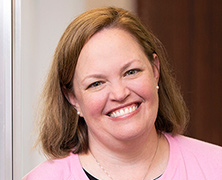Increasing Diversity in STEM
Increasing diversity in STEM begins with exposing young girls to various aspects of science in everyday settings and emphasizing how much fun it can be. For instance, I taught chemistry as a form of magic at my daughter’s Harry Potter-themed eighth birthday party! As the co-leader of a Brownie Girl Scout troop, I also introduce elementary-aged girls to biology, coding, and even astrophysics in fun and easy-to-understand ways, and encourage them to expand their learning in these fields. If we nurture girls’ curiosity for STEM disciplines, as opposed to stigmatizing it or treating their scientific classes at school like a burden, they will feel more inspired to explore STEM careers when they grow up.
Barriers to Closing the STEM Gender Gap
The biggest barrier I see to closing the gender gap in STEM is getting young girls interested in these fields, particularly computer science, physics, and engineering. We need to determine creative and effective methods to not only excite girls about STEM at a young age, but also continue to encourage them through their higher education and entrance into the workforce. I was fortunate to experience support from my professors throughout my undergraduate and graduate studies in biology, but my classes were at least 50 percent female. For the classroom and professional settings with gender gaps, however, women need more role models across all scientific fields to demonstrate success and provide guidance.
Moving Women Forward in STEM
One of the key components of moving women forward in STEM is identifying female role models and mentors in underrepresented fields like engineering, mathematics, physics, and computer science. I have been blessed to receive invaluable mentorship throughout my career (which has come primarily from male supervisors), but I know that not everyone has those opportunities.
I would like to see more women in STEM fields serve as mentors, so that other women in their specific fields can see themselves succeeding and learn from their mentors’ experiences, both positive and negative. I also encourage women to advocate for themselves by seeking out mentorship from women they admire.







